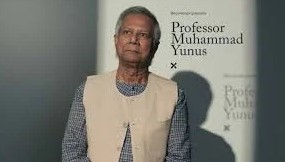Edited by Deepali Verma
Japanese rescuers battled the clock and powerful aftershocks to find survivors of a New Year’s Day earthquake that killed close to 48 people and caused widespread destruction. The 7.5 magnitude earthquake that rattled Ishikawa prefecture on the main island of Honshu also triggered tsunami waves more than a metre high and toppled houses, all while causing a major fire and tore apart roads.
The Noto Peninsula witnessed the destruction including buildings damaged by fire, houses flattened, fishing boats sunk or washed ashore and highways hit by landslides.
“I cannot believe that the house is this broken and everyone in my family managed to come out of it unscathed,” said Akiko, standing outside her parent’s tumbledown home in the badly hit city of Wajima.
The start of 2024 “will be etched into my memory forever,” she told AFP after what she called the “long and violent” earthquake on January 1.
Local authorities have marked the death count at 48 but the number is expected to rise as the rescuers comb through the rubble.
“Very extensive damage has been reported, including numerous casualties, building collapses as well as fires,” Prime Minister Fumio Kishida said after a disaster response meeting.
“We have to race against time to look for and rescue victims of the disaster.”
Aerial news footage captured the terrifying scale of a fire that cut through the old market area of Wajima, where a seven-storey commercial building also collapsed. Quake damage made it difficult for the rescue efforts to put out the blaze.
Almost 33,000 households were without power supply in the region, which saw freezing temperatures overnight, the local energy provider said. Many cities were without running water, too.
The US Geological Survey reported the magnitude of the earthquake to be 7.5 while Japan’s meteorological agency measured it at 7.6, and said it was one of more than 150 to shake the region through Tuesday morning.
Several strong jolts were felt early on January 2, including one measuring 5.6 that prompted national broadcaster NHK to move to a special programme.
Tsunami warning lifted
Waves at least 1.2 metres (four feet) high hit Wajima and a series of smaller tsunamis were reported elsewhere on January 1. Warnings of much larger waves proved unfounded and on January 2, Japan lifted all tsunami warnings.
Viral images on social media showed cars, houses and bridges in Ishikawa wobbling violently as the terrified people sheltered in shops and train stations. A team of firefighters crawled under a collapsed commercial building in Wajima searching for the survivors, as shown by the television footage.
“Hang in there! Hang in there,” they consoled as they battled through piles of wooden beams with an electric saw.
The fire in Wajima has as many as 200 structures as victims, reports said. The people evacuated in the dark, some with blankets and others carrying babies. NHK informed of 25 houses being collapsed in the city, including 14 that may have had people trapped inside.
Ishikawa Governor Hiroshi Hase took to his social media to write that roads have been cut in widespread areas by landslides or cracking, while in the port of Suzu “multiple” vessels had capsized.
A total of 62,000 people had been given the order to evacuate, according to the fire and disaster management agency. The defence ministry informed about 1,000 people staying at a military base.
Bullet trains suspended
The New Years earthquake shook apartments in the capital Tokyo about 300 kilometres (186 miles) away, where a public New Year’s Day greeting event by Emperor Naruhito was cancelled. The earthquake left about 1,400 people stuck on suspended bullet trains overnight, including Georgia’s ambassador Teimuraz Lezhava who praised the “kindness of the station staff and the passengers around us” on social media.
Around 1,000 others stuck in local express trains for almost 24 hours were halted on Monday, NHK said. About 500 people were also stranded and without help at Noto’s damaged airport as the access roads were blocked and the runway was riddled with cracks.
Hundreds of earthquakes hit Japan every year and the vast majority of them cause no damage. There have been reports of the number of earthquakes in the Noto Peninsula region steadily increasing since 2018, as per the Japanese government report last year.
China along with the United States and other countries has expressed its condolences.
















